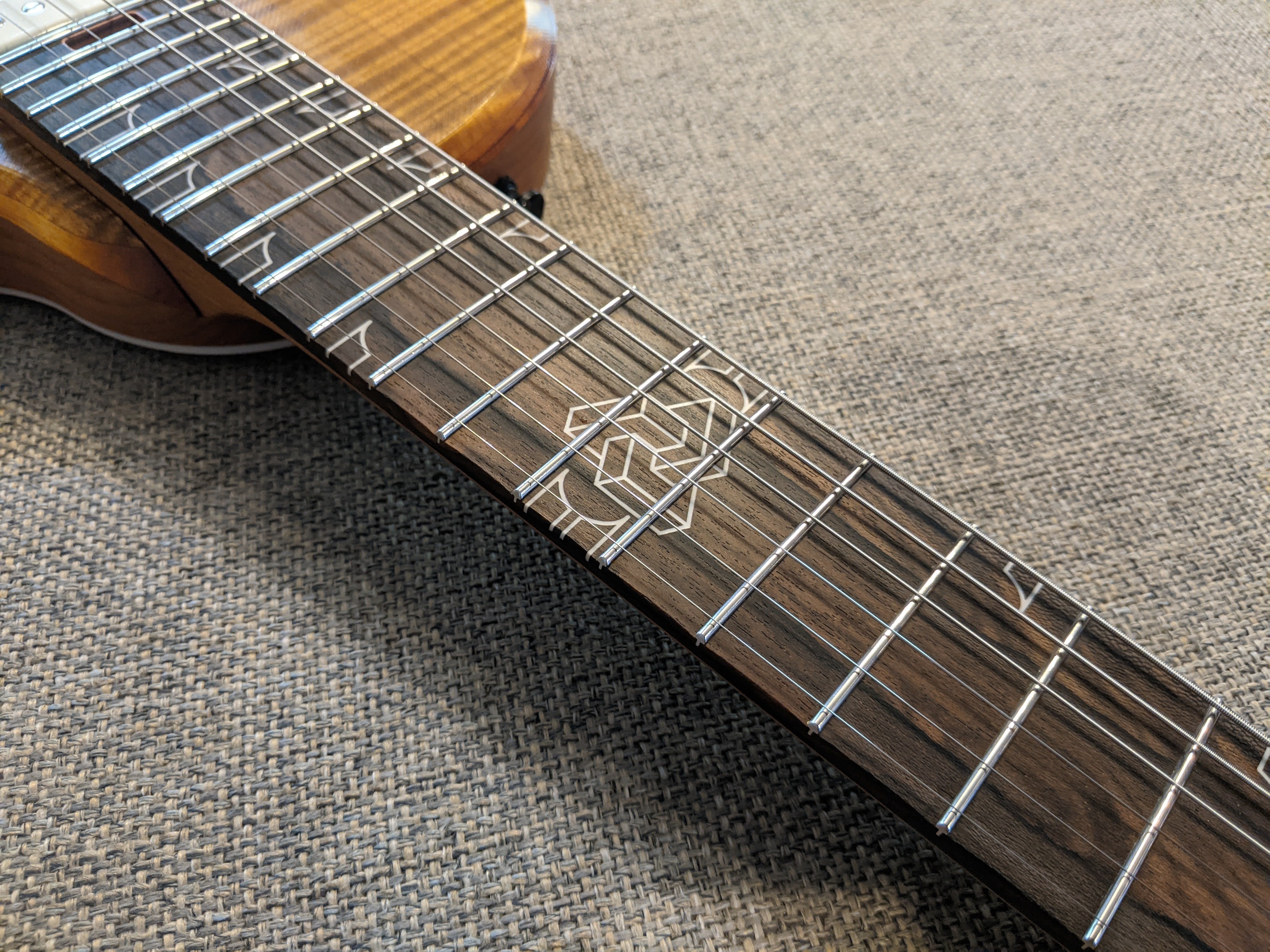Neck Stability & Lumber Selection
Arguably the greatest feature of a TEN32 guitar is the portability made possible via the bolt on headstock and backpack case, but this level of portability serves up some issues of its own. If you wanted to take your axe from Denver to Miami, you'll be putting your instrument through some pretty extreme environmental shifts that are likely to affect its playability.
Obviously that's about as extreme a shift as you could conjure up, but the majority of guitar necks ever built would struggle with this transition for one specific reason - neck stability. Many guitar necks are made of lumber with sub-par dimensional stability, although this is improving in recent years. Usually this choice is made for financial reasons, material availability reasons, or just plain dogma. When choosing neck lumber, dimensional stability is the primary factor I consider, followed by sustainability, followed by affordability.
In addition, I believe an optimal guitar neck must be rigid enough to completely counteract string tension, so TEN32 necks made with lower rigidity lumber (Roasted Maple and Padauk) include carbon fiber reinforcement flanking the truss rod for added stiffness. I also use lightweight stainless steel truss rods with wood sleeves from Allied Luthiery and consider them to be the best available. Paul Reed Smith says plastic sleeves are a tone sucker and I'm inclined to believe him, but even if he's wrong, when I'm already spending $60 on a truss rod an extra $12 for a wood sleeve instead a plastic one is an easy choice for a perfectionist like myself.
Its not difficult to find a dimensional stability chart like this one online. Its also not difficult to see that the most common neck material (Maple) is pretty far down the list, in fact it's well below softwoods like Pine and Fir! Luckily for maple, if you cut it right (quartersawn) and season it right, it's still a very stable choice, which is why it's currently at the top of my list.
Quartersawn Roasted (Torrefied) Maple - Quartersawn lumber is best for guitar necks for a variety of reasons (although not a hard requirement depending on other factors), and maple is about the only species you can reliably acquire cut this way. I've straight up thrown this stuff in a bucket of water and pulled it out a week later to find virtually no change. Anecdotally, the hype appears to be legit, and while this wasn't always the case, I'm a big fan of roasted maple in 2023, which is why I bumped it to the top of this list. Here's the evidence:

Bill's guitar was delivered in late July. He sent me that message 2 months later in late September. Oh, by the way, he lives in an area of Hawaii where the average humidity is 78%. I built his guitar in Denver where the average humidity is 37%. I'd have to build in the middle of the desert to create a more dramatic environmental shift.
The quartersawn part for me is critical. I wouldn't build a neck out of anything that's flat sawn, even if it's roasted and reinforced (although rift sawn + roasted & reinforced usually works out fine). Quartersawn Maple looks great too.

Mesquite - its nearly impossible to find pieces of mesquite that are clear enough (free of knots, cracks, and other natural defects) to build necks with. I got lucky and found some through a friend. So far, only about 25% of the blanks end up suitable for building necks, but I think I can improve on this rate via hand selection and make Mesquite a truly viable option. It looks great, feels great, and some even has bright yellow streaking in it.

Bamboo - Is not wood, its grass. I'll still probably try it someday.
Merbau - Great dimensional stability, but not sustainable. I do happen to have some (and can currently still get more) if you want a neck that looks like mahogany but with superior stability. In the photo below, you can see it next to an African mahogany body.

Australian Cypress - Generally too knotty for guitar necks. I haven't stumbled onto any miraculously clear sources like the Mesquite above.
Padauk - Not only is Padauk very stable, its also very sustainable and affordable. Barring a cheap source of clear Mesquite, this is the leader in the clubhouse. If you want to knit pick, Padauk has one issue - it doesn't retain it's beautiful orange color very well over time, regardless of the finish used. Obviously this has no effect on its suitability for use as a guitar neck. Padauk sands out extremely well and the neck profile feels amazing in your fretting hand.

Teak - Too expensive, not sustainable.
Wenge - Expensive, not great on the sustainability scale, but still one of my personal favorites for guitar necks, mostly due to the aesthetics, but also because it doesn't require finishing, if a raw wood neck is interesting to you.

Purpleheart - Very stable, also very hard. Unfortunately...its purple. I'll gladly build a purpleheart neck if you want one though.
Santos Mahogany - I haven't tried it yet personally (can't find any), but its sustainable and stable enough to be a valid option.
Anything less stable than that, I'm wary of, but there are some other potentially viable alternatives:
Sassafras - Extremely lightweight, but also on the softer side. Becoming common as a body wood since equally lightweight swamp ash is getting expensive. It's interesting because it's exceptionally sustainable, available domestically for great prices, has legit stability numbers, and smells like root beer during machining. I have a half dozen great blanks that I intend to experiment with, and I'm very interested to see how the extreme light weight might affect acoustic response. If you want a super lightweight instrument, consider building the whole thing from sassafras.
Black Locust - Very similar to sassafras, but much heavier. Still very affordable, easily attainable, great stability numbers, and the name is totally metal.
Laminated necks - A proven commodity, but I really don't think there are advantages over a one piece neck made the right way, with the right materials. I also don't love the idea of multiple layers of glue in the neck, and it takes far longer to build a laminated neck blank, so expect to pay considerably more, if I even offer it.
For a while I was obsessed with creating the ultimate stable neck, but as with all things, there is a point of diminishing returns. There's really no good reason to scour the world for the perfect piece of Mesquite, then have it torrefied, then cut it up and laminate it with a torrefied purpleheart core, blah blah blah.
Bottom line, if you choose one of the right naturally stable lumber species in the first place and build the neck correctly, all of these stability issues become an afterthought.
Up next, lets take a closer look at TEN32 backpack cases.

